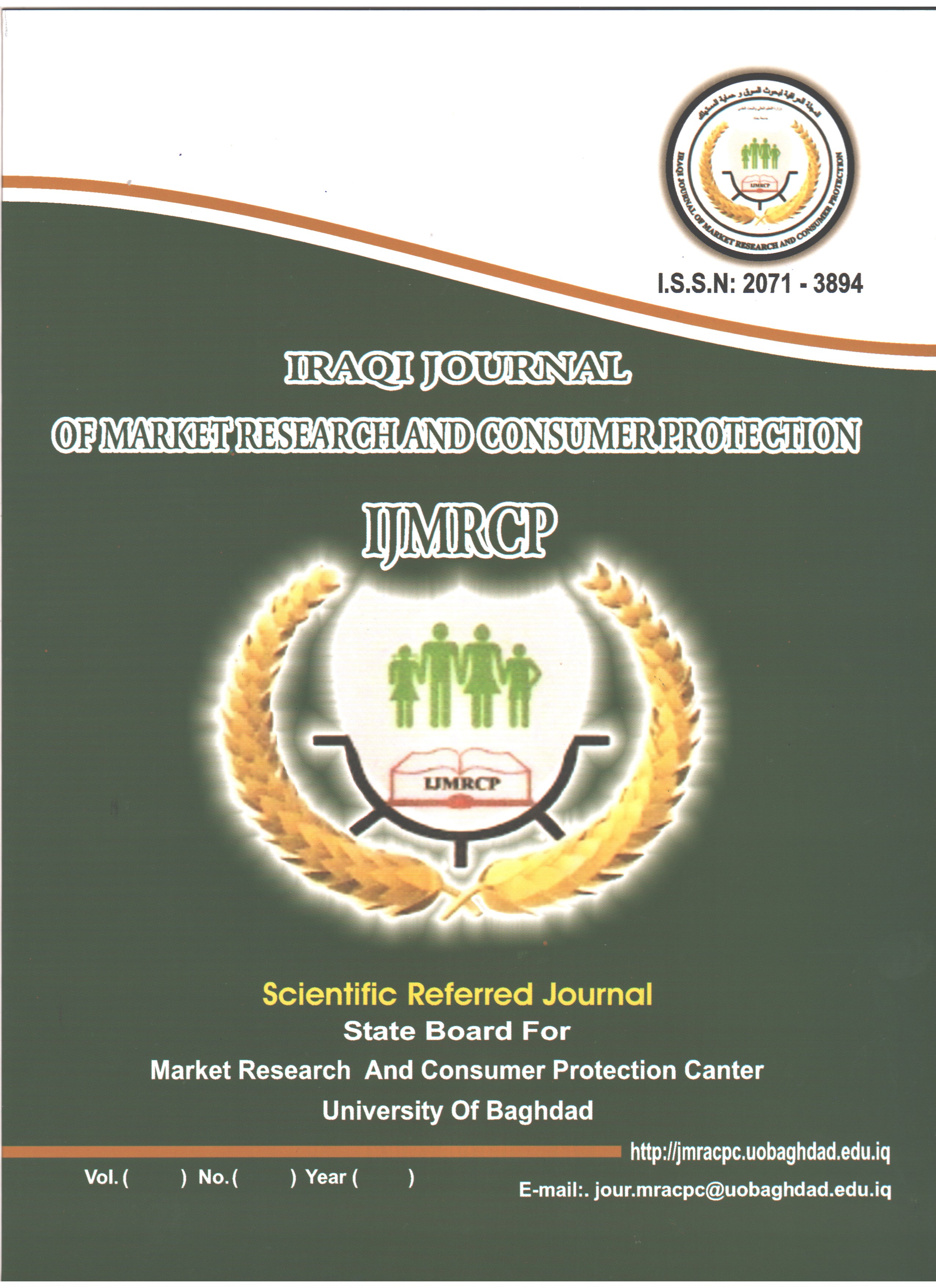Abstract
The study aimed to extract phenolic and flavonoid compounds from pomegranate seeds and banana peels by microwave technology, where the percentages of phenolic compounds in pomegranate seeds and banana peels were 40.60 and 32.27 mg GAE/g dry weight, respectively, while the flavonoid compounds were in pomegranate seeds and banana peels 2.48 and 17.8 mg catechins/g dry weight, and they were diagnosed using a High-performance liquid chromatography(HPLC) Technique device, and it was found that there is a number of phenolic compounds included (galic acid, caffeic acid, chlorogenic and ellagic acid), while flavonoid compounds included (catechins, quercetin, coumarin, and myricetin). and the inhibitory activity of the plant extracts was tested against a number of bacteria Escherichia coli (E.coli), Bacillus cereus(B.cereus), Staphylococcus aureus(S.aureus and Pseudomonas aeruginosa (P.aeruginosa), at three concentrations 3, 7and 10% which reached the highest inhibitory effectiveness of pomegranate seed extract and according to the order of its effect on bacteria as follows P.aeruginosa, E. coli, and finally B. cereus, as the diameter of the inhibition halo at a concentration of 10% reached 21 mm against P.aeruginosa bacteria, and pomegranate seed extract didn't show any inhibitory activity against S.aureus bacteria. Banana peel extract showed lower inhibitory efficacy than pomegranate seed extract, as the diameter of the inhibition halo against P.aeruginosa bacteria at a concentration of 10% to 11 mm, while the extract didn't show any inhibitory activity against B. cereus bacteria at any concentration. Pomegranate seed extract exceeded the highest concentration of phenolic substances in addition to containing a higher concentration of phenolic compounds and flavonoids diagnosed and had the highest inhibitory effectiveness against bacteria and molds.
Keywords
flavonoid. Microwave. Mold. Bacteria
Phenol
Abstract
هدفت الدراسة الى استخلاص المركبات الفينولية والفلافونويدية من بذور الرمان وقشور الموز بتقنية المايكروويف حيث بلغت نسب المركبات الفينولية في بذور الرمان وقشور الموز40.60 , 32.27 ملغم GAE/غم وزن جاف على التوالي، اما المركبات الفلافونويدية فكانت في بذور الرمان وقشور الموز ( 2.48 و 17.8 ملغم كاتيكين/ غرام وزن جاف، وشخصت بأستخدام جهاز الكروموتوغرافي السائل عالي الأداء وتبين وجود عدد من المركبات الفينولية شملت (حامض الكاليك حامض الكافيك، الكلوروجينك وحامض الايلاجيك) اما المركبات الفلافونويدية شملت (الكاتيكين، الكورستين، الكومارين والمايريستين)، كما تم اختبار الفعالية التثبيطية للمستخلصات النباتية تجاه عدد من البكتريا E. coli ,B. cereus ,S. aureus ,P. aeruginosa وبثلاث تراكيز 3 ,7 ,10 % اذ بلغت اعلى فعالية تثبيطية لمستخلص بذور الرمان وبحسب ترتيب تاثيرها على البكتريا كالتالي: p. aeruginosa, , E. coli وأخيرا B. cereus اذ وصل قطر هالة التثبيط عند تركيز 10% الى 21 ملم تجاه بكتريا pseudomonas ، ولم يبدي مستخلص بذور الرمان أي فعالية تثبيطية تجاه بكتريا S. aureus . اظهر مستخلص قشور الموز فعالية تثبيطية ادنى من مستخلص بذور الرمان اذ وصل قطر هالة تثبيط مستخلص قشور الموز تجاه بكتريا P.aeruginosa عند تركيز 10% لـ 11 ملم في حين لم يظهر المستخلص أي فعالية تثبيطية تجاه بكتريا B.cereus عند أي تركيز. اذ تفوق مستخلص بذور الرمان بأعلى تركيز للمواد الفينولية بالإضافة الى احتوائه على تركيز اعلى من المركبات الفينولية والفلافونويدية المشخصة وكان لها اعلى فعالية تثبيطية تجاه البكتريا والاعفان.
Keywords
فينول، فلافونويد، مساعدة المايكروييف، عفن، بكتريا.
